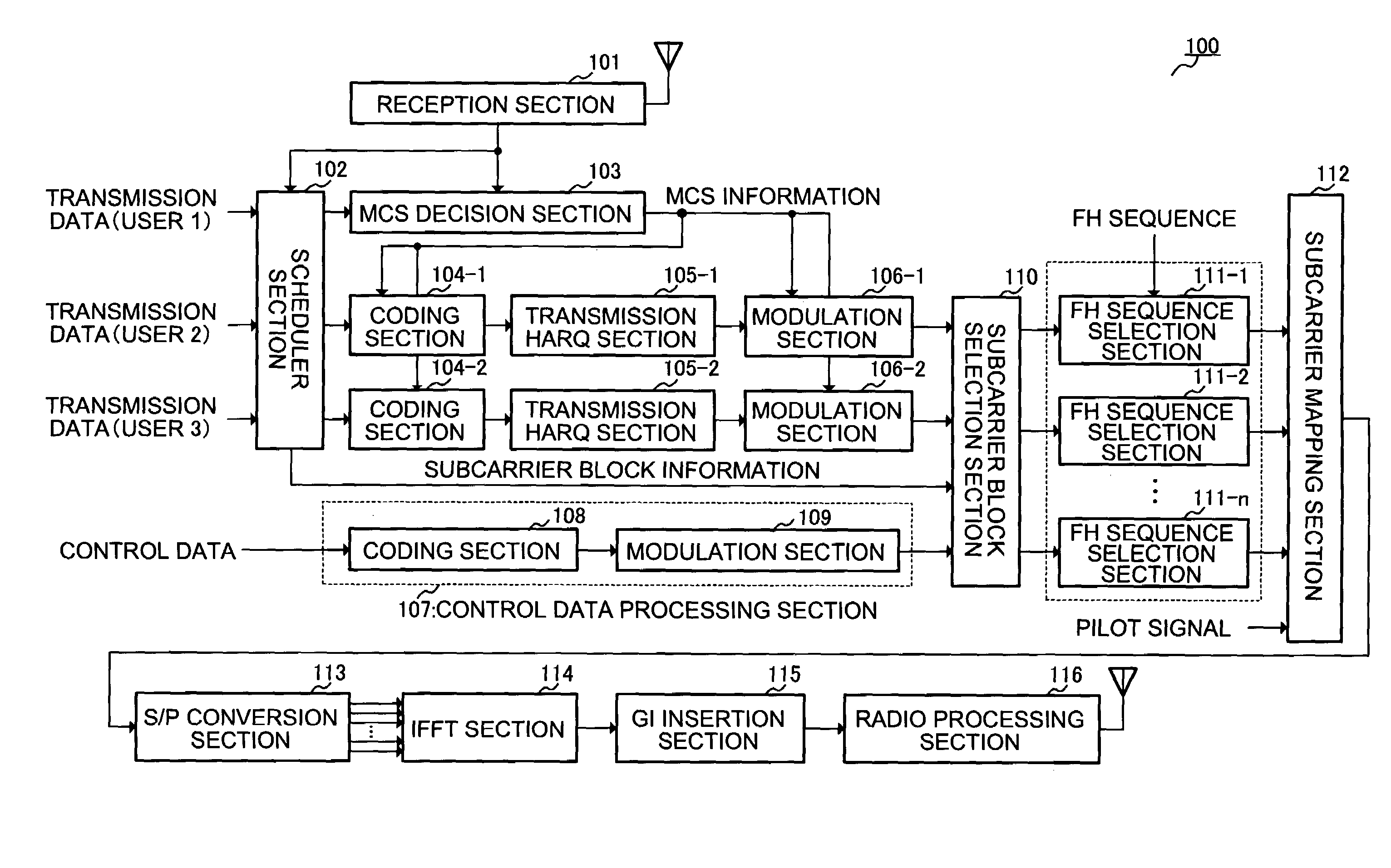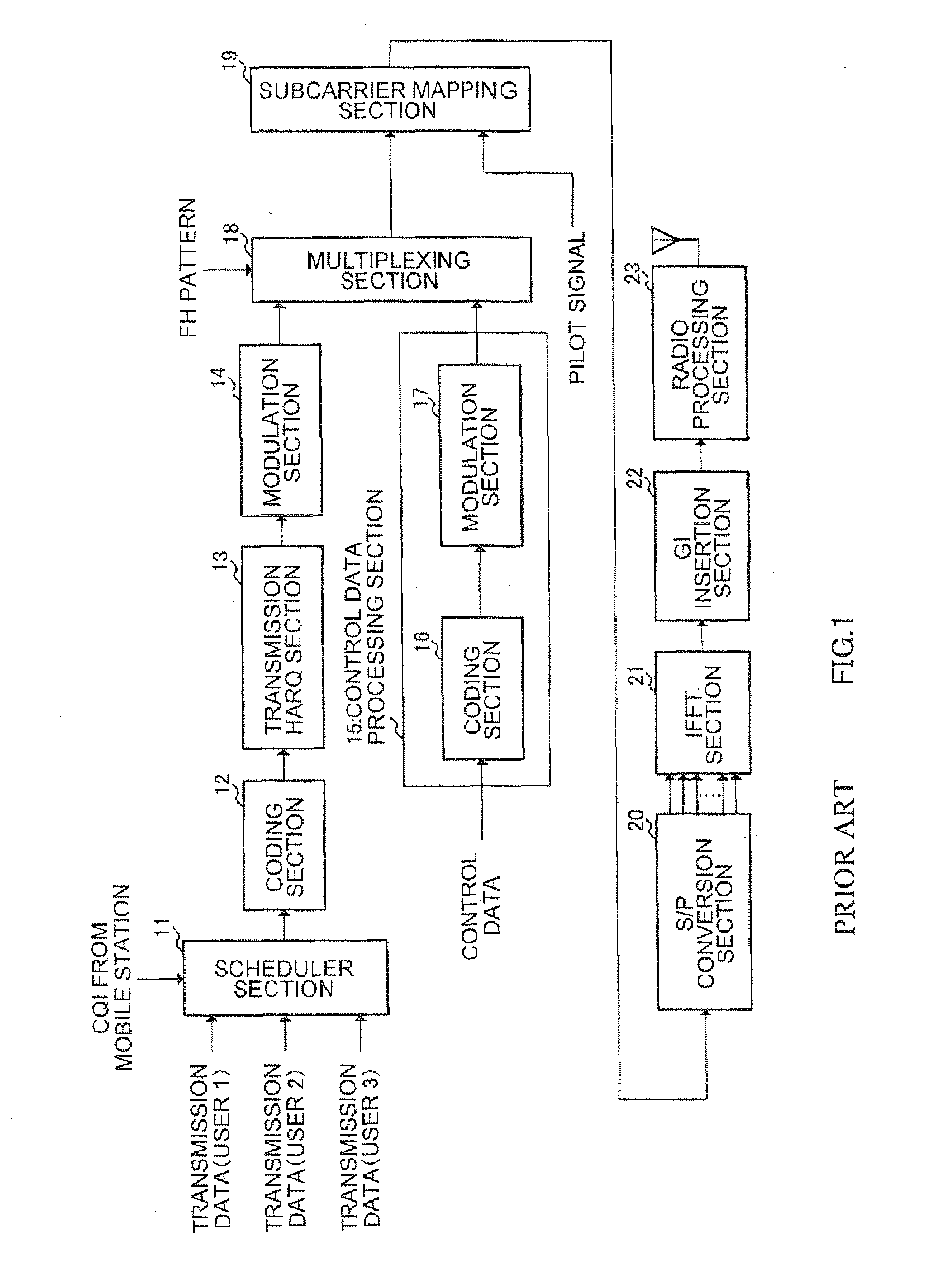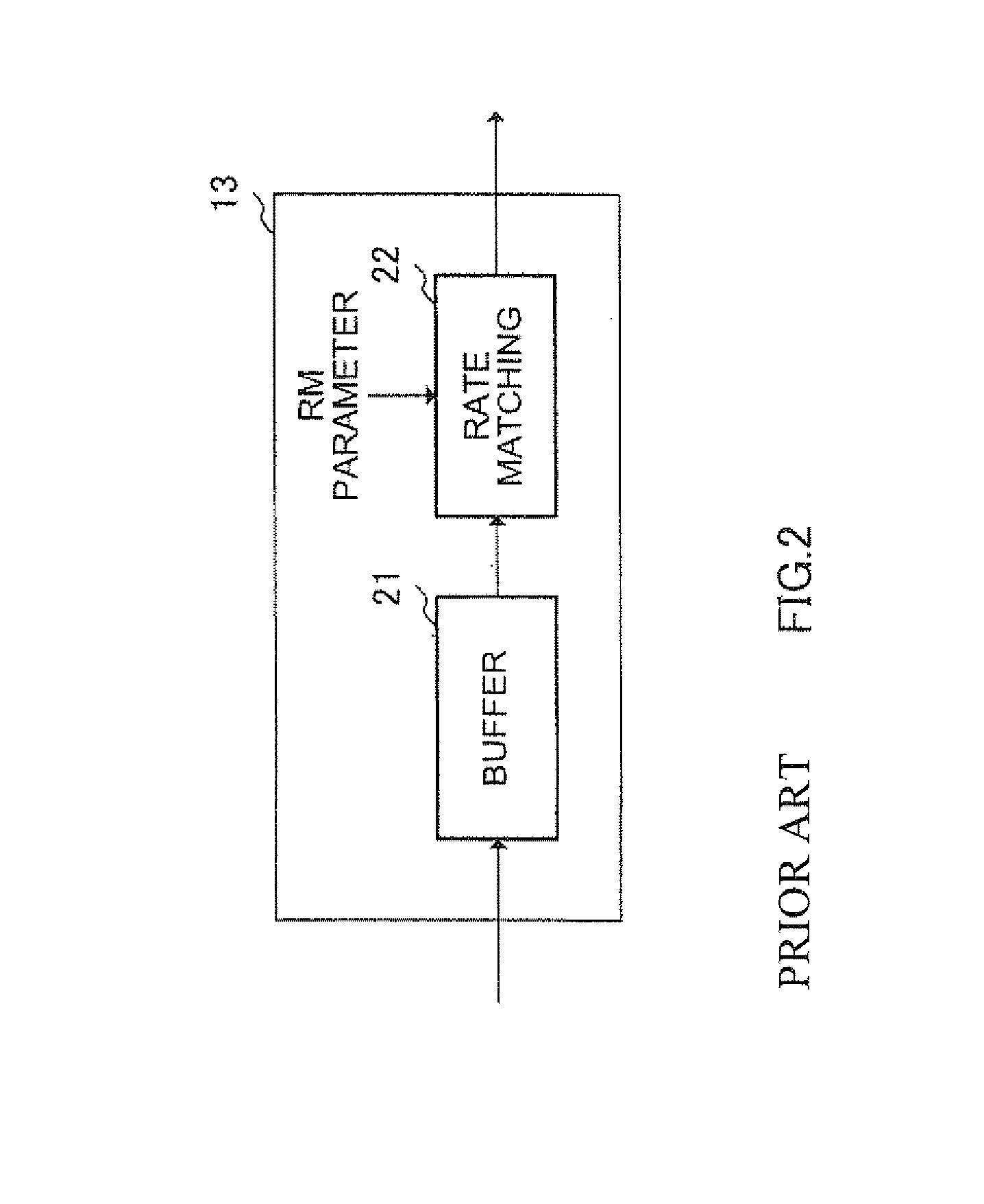Base station using a multicarrier communication band divided into a plurality of blocks
a multi-carrier communication and base station technology, applied in the field of base station apparatus and communication method, can solve the problems of not being able to receive packets, unable to obtain frequency scheduling effects, and enormous amount of control information, so as to reduce interference between cells through hopping, reduce the amount of control information on resource assignment, and reduce the interference between cells
- Summary
- Abstract
- Description
- Claims
- Application Information
AI Technical Summary
Benefits of technology
Problems solved by technology
Method used
Image
Examples
embodiment 1
[0041]This embodiment will explain a case with transmission using FH-OFDM where an operating frequency band is divided into subcarrier blocks and a base station apparatus selects a subcarrier block to be used in a frame for each user through frequency scheduling. Each user signal is subjected to frequency hopping within the block. With an operating frequency band divided into subcarrier blocks, it is possible to assign a frequency to a most suitable user. Furthermore, causing the operating subcarriers to hop within a block can reduce interference between cells.
[0042]FIG. 5 illustrates a block diagram showing the configuration of a base station apparatus according to Embodiment 1 of the present invention. The base station apparatus 100 in FIG. 5 is mainly constructed of a reception section 101, a scheduler section 102, an MCS decision section 103, a coding section 104-1, a coding section 104-2, a transmission HARQ section 105-1, a transmission HARQ section 105-2, a modulation section...
embodiment 2
[0071]FIG. 9 is a block diagram showing the configuration of a base station apparatus according to Embodiment 2 of the present invention. However, those having the same configurations as those in FIG. 5 are assigned the same reference numerals as those in FIG. 5 and detailed explanations thereof will be omitted.
[0072]The base station apparatus 400 in FIG. 9 differs from the base station apparatus in FIG. 5 in that it is provided with a control data processing section 401, a subcarrier block selection section 402 and a subcarrier block hopping sequence generation section 403 and subcarrier blocks are subjected to hopping also for a control channel and a channel which sequentially transmits speech, etc., at a low rate. The control data processing section 401 is mainly constructed of a coding section 411 and a modulation section 412.
[0073]In FIG. 9, the coding section 411 carries out coding on control data, speech data, broadcast signal and multicast signal and outputs the coded signal...
embodiment 3
[0082]Users on a cell boundary receive strong interference from adjacent cells. Since users in other cells do not know to which subcarrier blocks they are assigned next and the users cannot predict an amount of interference. Therefore, for the users on a cell boundary, their subcarrier blocks may receive a small amount of interference and have a high CIR at an actual moment but may have a greater amount of interference next moment. When measuring a CIR as the reception quality feed back by a communication terminal apparatus, this embodiment uses a measured value for each block as signal power (C) and uses an average value of interference power of respective blocks as interference power (I).
[0083]FIG. 11 illustrates the configuration a CIR measuring section of the base station apparatus according to Embodiment 3 of the present invention. However, components having the same configurations as those in FIG. 8 are assigned the same reference numerals as those in FIG. 8 and explanations t...
PUM
 Login to View More
Login to View More Abstract
Description
Claims
Application Information
 Login to View More
Login to View More - R&D
- Intellectual Property
- Life Sciences
- Materials
- Tech Scout
- Unparalleled Data Quality
- Higher Quality Content
- 60% Fewer Hallucinations
Browse by: Latest US Patents, China's latest patents, Technical Efficacy Thesaurus, Application Domain, Technology Topic, Popular Technical Reports.
© 2025 PatSnap. All rights reserved.Legal|Privacy policy|Modern Slavery Act Transparency Statement|Sitemap|About US| Contact US: help@patsnap.com



